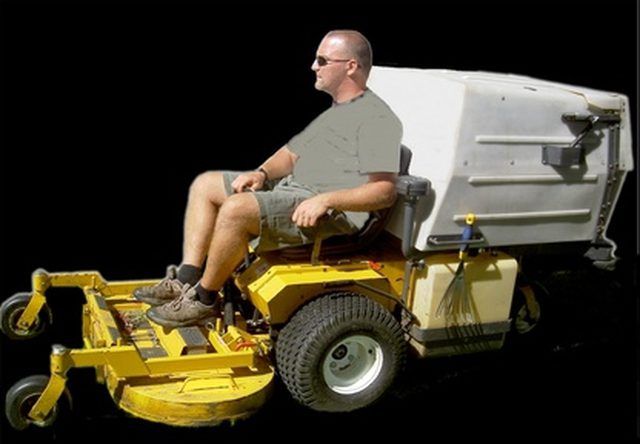Bulbs
Flower Basics
Flower Beds & Specialty Gardens
Flower Garden
Garden Furniture
Garden Gnomes
Garden Seeds
Garden Sheds
Garden Statues
Garden Tools & Supplies
Gardening Basics
Green & Organic
Groundcovers & Vines
Growing Annuals
Growing Basil
Growing Beans
Growing Berries
Growing Blueberries
Growing Cactus
Growing Corn
Growing Cotton
Growing Edibles
Growing Flowers
Growing Garlic
Growing Grapes
Growing Grass
Growing Herbs
Growing Jasmine
Growing Mint
Growing Mushrooms
Orchids
Growing Peanuts
Growing Perennials
Growing Plants
Growing Rosemary
Growing Roses
Growing Strawberries
Growing Sunflowers
Growing Thyme
Growing Tomatoes
Growing Tulips
Growing Vegetables
Herb Basics
Herb Garden
Indoor Growing
Landscaping Basics
Landscaping Patios
Landscaping Plants
Landscaping Shrubs
Landscaping Trees
Landscaping Walks & Pathways
Lawn Basics
Lawn Maintenance
Lawn Mowers
Lawn Ornaments
Lawn Planting
Lawn Tools
Outdoor Growing
Overall Landscape Planning
Pests, Weeds & Problems
Plant Basics
Rock Garden
Rose Garden
Shrubs
Soil
Specialty Gardens
Trees
Vegetable Garden
Yard Maintenance
How Can I Make My Own Lawn Tractor Seat Cover?
How Can I Make My Own Lawn Tractor Seat Cover?. Lawn tractors have steadily increased in price over the years, and the wise owner will do all possible in caring for the tractor to extend the useful life or the resale value. Of all components on a lawn tractor, the first to experience wear is the vinyl seat. Left unprotected, the vinyl absorbs...

Lawn tractors have steadily increased in price over the years, and the wise owner will do all possible in caring for the tractor to extend the useful life or the resale value. Of all components on a lawn tractor, the first to experience wear is the vinyl seat. Left unprotected, the vinyl absorbs perspiration with body salts that will cause the material to become brittle, leading to cracks. A simple improvised seat cover will keep the seat looking like new for years.
Things You'll Need
Folding car window sun protector
Permanent marker
1/8-inch diameter rope
Tape measure
50-lb. burlap cloth potato bag
Sewing scissors
Sewing needle kit
Brown sewing thread
Unfold the windshield sun protector and place it over the seat of the lawn tractor so that one edge is even with the front edge of the lawn tractor seat. Fold the protector into a crease at the back of the seat where the seat back and the lower part of the seat meet, using the edge of your hand to gently tuck the new crease between the seat and the seat back. Extend the remainder of the protector up the rear seat cushion and bend it around the top of the seat back.
Draw a line across the protector where the crease is pushed slightly between the seat and the seat back. Draw lines along the protector along the edges indicating the amount of width to be trimmed so the protector fits evenly on the lawn tractor seat without excessive width.
Trim away the excess width from the protector. Use a tape measure to measure out a 5-foot piece of 1/8-inch rope and lay the rope over the crease line drawn on the protector in the previous step, keeping the rope centered. Sew the rope onto the crease line with needle and thread so the rope cannot be easily pulled from the material. Use a generous amount of thread, sewing the rope to the protector tightly as it must be able to withstand the body weight of the operator.
Insert the trimmed piece of protector into a 50-lb. burlap cloth potato bag so that bottom edge of the bag will be along the front edge of the lower half of the seat. Pull the bag until taut, and then feel through the bag to locate the rope that was sewn onto the protector. Measure another 5-foot piece of rope and sew to the bag material and the protector. Run the needle and thread all the way through both, running the thread around the rope during each stitch. Sew until solidly in place.
Cut small holes through the fabric of the cloth bag and pull the protector rope ends through the holes in the fabric so both rope lengths are visible outside the material.
Sew the cloth bag all along the edges to fasten the bag fabric onto the protector and then stitch the open end of the bag closed.
Place the newly crafted cloth-covered seat protector onto the lawn tractor seat so the ropes are located near the seat crease. Pull all rope ends around to the back of the seat and pull together tightly, tying a knot into both in a way that the seat cover is firmly placed on the seat without ability to move it. Tie the back of the seat cover around the seat back with rope, if desired, but this isn't necessary as the operator's body weight will hold the back in place while the lower body weight will prevent slippage.
Tips & Warnings
Don't omit either of the ropes. Both the inner material and the outer cloth material should have ropes sewn at the crease location to withstand the operator's body weight. This will make the seat cover last much longer than if only one of the materials is given a rope tie-down.
Use an "even backstitch" hand-sewing method when sewing together this seat cover for added strength.